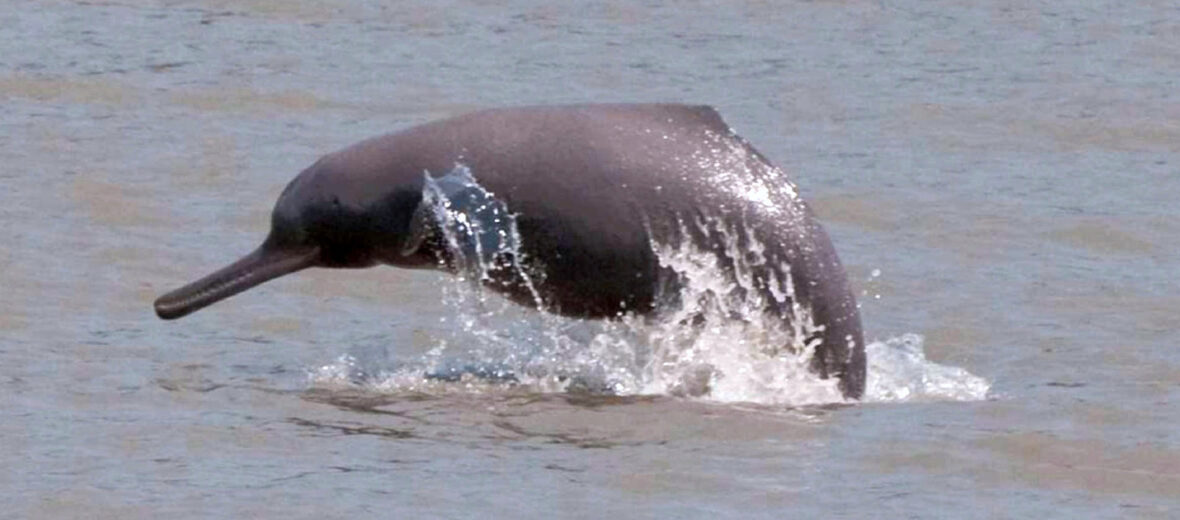
The south Asian river dolphin hails from Bangladesh, India, Nepal, and Pakistan. They prefer slower moving waterways with an abundance of prey. These migratory dolphins move down stream during the winter (to shallower water) and upstream during the spring and summer months (to deeper water). Due to habitat destruction, (via dams), overfishing, and pollution, these incredible creatures are listed as Endangered by the IUCN.
First the Stats…
Scientific name: Platanista gangetica
Weight: Up to 170 lbs.
Length: Up to 8.53 feet
Lifespan: Up to 30 years
Now on to the Facts!
1.) These dolphins go by many names: Ganges susu, Shushuk, Gangetic dolphin, Bhulan, Indus dolphin, Indus blind dolphin, blind river dolphin, and side-swimming dolphin.
2.) South Asian river dolphins are typically solitary. They only come together to mate and if there is an abundance of fish to eat.
3.) Due to poor eyesight, these cetaceans depend on echolocation (finding objects by reflected sound) to find food.
4.) They use their teeth to hold onto prey, but don’t chew their food; preferring instead to swallow it whole.
5.) The south Asian river dolphin communicates via bursts, clicks, and twitters.
But wait, there’s more on the south Asian river dolphin!
6.) Breaching partially or completely from the water and landing on their sides is a commonly seen behavior.
7.) A group of dolphins is called a herd, pod, or school.
Did you know…?
The eyes lack a lens and have evolved a flat cornea. This makes seeing clear images impossible. Therefor, they use their eyes only to see light and dark.
8.) These dolphins prey on shrimp, carp, and catfish.
9.) Females birth a single calf, after up to a 10 month gestation (pregnancy).
10.) South Asian river dolphins tend to swim on their sides in order to find prey; using their flipper to churn up the muddy substrate and find hiding food.
But wait, there’s still more on the south Asian river dolphin!
11.) Like all dolphins, they have a blowhole at the top of their head that they use to breathe.
12.) Due to an extra vertebra in their neck, these dolphins have the capability to turn their heads. All river dolphins have this feature, unlike oceanic dolphins.
Now a Short South Asian River Dolphin Video!
Be sure to share & comment below! Also, check out the Critter Science YouTube channel. Videos added frequently!
Want to suggest a critter for me to write about? Let me know here.



